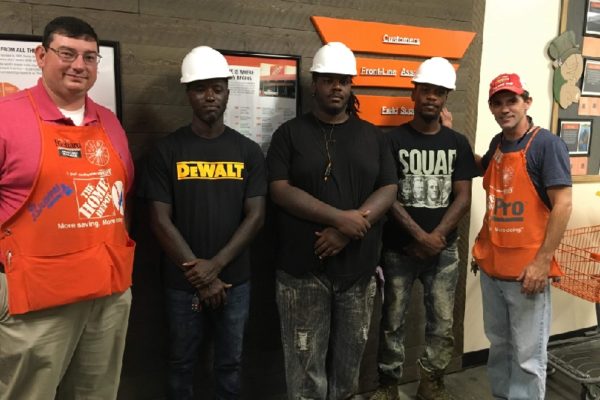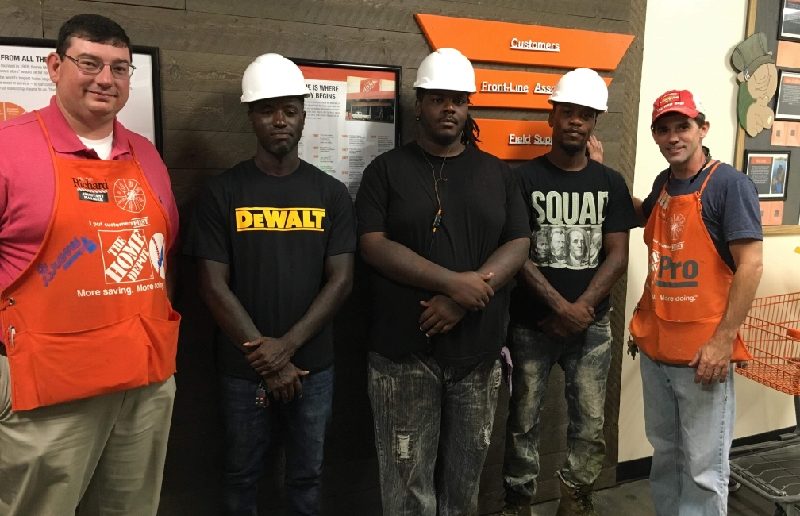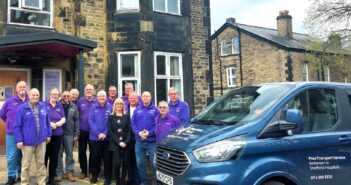What do you do when you see someone struggling with mobility issues? If you’re like many of us, you might help them down the steps or offer to give them a ride. For John Strong Jr., however, watching his handicapped neighbors and fellow veterans struggle encouraged him to do even more.
Strong felt disabled veterans remain overlooked by society. While the veterans administration provides health care, this often doesn’t help with other expenses that accompany disability, such as wheelchair-accessible ramps. That’s why Strong, along with his colleagues Eric Powell and Chucky Jackson, created the Build a Ramp Foundation.
How Build a Ramp Foundation Got Started
For James Taylor, Christmas Day ended in tragedy. A bullet left him paralyzed from the neck down. His mother, Isha Denegall, started a GoFundMe page for his medical expenses.
Denegall knew of a recent remodeling project Strong completed, and she reached out to him about building a ramp. When she inquired about pricing, Strong informed her he’d take no payment for his labor. He simply told her to buy the material, and he would take care of the heavy lifting. Thus, Build a Ramp Foundation began.
Strong returned to his business, Strong-Powell Home Construction, and shared the news. His colleagues Powell and Jackson quickly embraced his spirit of charity.
From there, the foundation grew quickly. The partners relied upon donations of building materials from local churches and businesses to fund projects for those who lacked the means to buy their supplies. Home Depot provided materials at a steep discount.
The foundation recently collaborated with the Greater Newton Grove Baptist Church. Their goal was constructing a 16-20 bed shelter in a previously abandoned structure. The residence required nearly $45,000 worth of repairs to make it accessible and habitable.
The Ongoing Problem of Accessibility

Even though laws exist mandating wheelchair-accessible entryways in many jurisdictions, those with disabilities report ongoing trouble with access — often daily. One recent survey found that 20 percent of disabled individuals experience a barrier blocking entrance to a building, often multiple times per day. Even in major cities, problems persist. For example, New York’s subway ranks as the least wheelchair-friendly public transportation system of any American city.
Even when an individual isn’t entirely wheelchair-bound, accessibility problems persist. For example, many people with chronic pain may rely on wheelchair ramps when they navigate crowded places like airports and tourist attractions. Long lines can prove problematic for people with postural orthostatic tachycardia syndrome (POTS), for example. In this condition, blood fails to circulate back to the heart from the legs when standing, leading to loss of consciousness.
Ironically, the nation’s opioid crisis hinders accessibility for chronic pain patients even further. Today, patients band together to demand changes to policies that force them to visit pain clinics every month — if they can get their medications at all. This creates a huge logistical problem for those who must rely on public transportation. Many feel they must take their lives in their hands to reach an inaccessible clinic, and being forced to do so every month seems unnecessarily cruel.
Supporting the Mission of the Build a Ramp Foundation
Like any human being, Strong sometimes faltered in his mission. At one point, he posted on social media the project had come to an end. However, when an elderly neighbor developed cancer and her only pleasure was sitting on her porch, Strong heeded her call for aid.
Strong decided to completely demolish her dilapidated porch. Renewed by this act of goodness, the Foundation roared back to life. Strong now devotes his time to bringing the community together, regardless of their socioeconomic or racial backgrounds.
Interested parties in need of assistance can apply for aid. At the moment, the foundation seeks additional laborers to support their mission. Those interested in providing supplies can donate on the foundation’s GoFundMe page.
Bringing Hope to the Disabled
Losing the ability to walk proves hard enough. Barriers to accessibility make life tougher for the disabled. With organizations like the Build a Ramp Foundation, we can increase inclusion and help those who need it most.


